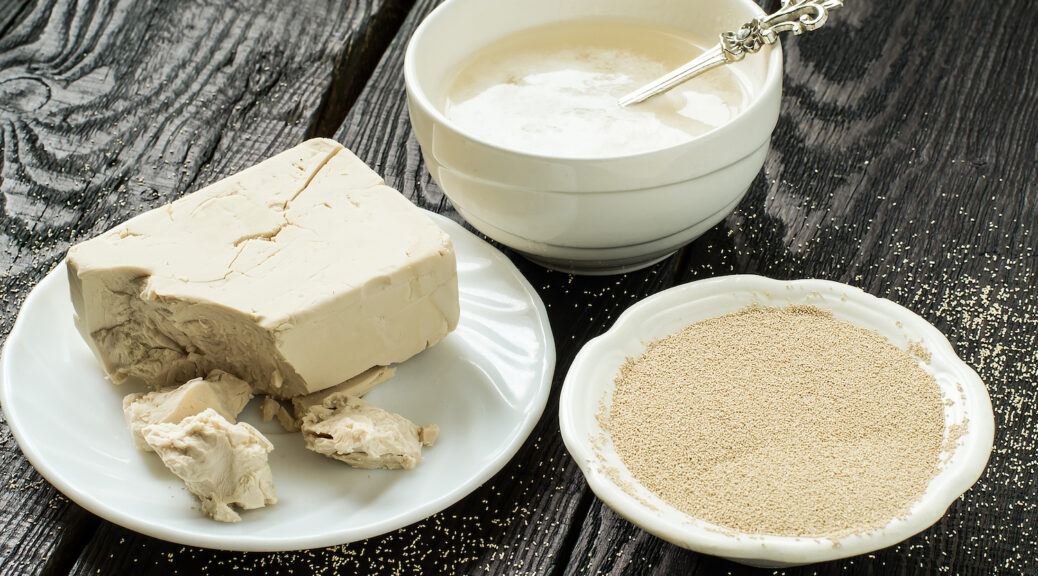
Making Fresh Home-Made Yeast for Bread
Until the mid-1800s, people made their own yeasts to use in baking bread. They made fresh yeast from hops, potatoes, pumpkin, and more. In 1868, Charles and Max Fleischmann created a compressed yeast cake and began selling it commercially. This was certainly easier than making your own!
INFORMATION BELOW COMPILED FROM 1800s COOKBOOKS
ON YEAST
Good yeast is indispensable to good bread. Every housekeeper should make sure by her own personal attention, that the yeast is properly made and the jar well scalded. A jar having a close cover is best. Bottles will burst, and you cannot be perfectly sure that a jug is cleansed from every particle of old yeast. To scald the jar, put it into a kettle of boiling water. This must be done every time you make yeast. Stone ware is liable to be cracked by the pouring of boiling water into it.
FRESH YEAST
All yeast is better and more powerful for being fresh. It is better to make it frequently, (the trouble being little), than to risk its becoming sour by endeavoring to keep it too long. When sour, it becomes weak and watery, tastes and smells disagreeably, and will never make light bread, besides being very unwholesome. The acidity may be somewhat corrected by stirring in some dissolved pearlash, saleratus, or soda immediately before the yeast is used, but it is better to have it good and fresh, without the necessity of any corrective. Yeast should always be kept in a cool place.
Sweet cakes, buns, rusks, &c., require stronger and fresher yeast than bread; the sugar will otherwise retard their rising.
YEAST AIDS
Yeast, in order to grow, requires something on which to feed, and the food that produces the most rapid growth is that which contains carbohydrate. Certain of the carbohydrates, however, prove to be better food and produce more rapid growth than others, and these, which are known as yeast aids, are usually added as ingredients in the making of bread. The ones that are most commonly used are sugar and potato water. Sugar is almost always added, but it should be limited in quantity because a dough mixture that is made heavy with sugar will rise very slowly. Potato water has been found to be a very satisfactory aid because the starch of the potato is utilized readily by the yeast. If this aid is to be used, the water in which potatoes are boiled may be saved, and when the ingredients required for the making of bread are mixed, it may be added as a part or all of the liquid required. If it is desired to increase the amount of starch in the potato water, a boiled potato or two may be mashed and added to it.
POTATO YEAST
Pare half a dozen middle-sized potatoes and boil them in a quart of soft water mixed with a handful of hops, till quite soft. Then mash the potatoes smooth, not leaving in a single lump. Mix with them a handful of wheat flour. Set a sieve over the pan in which you have the flour and mashed potatoes, and strain into them the hop-water in which they were boiled. Then stir the mixture very hard, and afterwards pass it through a colander to clear it of lumps. Let it stand till it is nearly cold, then stir in four tablespoons of strong yeast and let it stand to ferment. When the foam has sunk down in the middle, (which will not be for several hours), it is done working. Then put it into a stone jug and cork it. Set it in a cool place.
BRAN YEAST
Mix a pint of wheat bran and a handful of hops with a quart of water. Boil them together about twenty minutes. Then strain it through a sieve into a pan. When the liquid becomes only milk-warm, stir into it four tablespoons of brewer’s yeast, and two of brown sugar, or four of molasses. Put it into a wooden bowl, cover it, and set it near the fire for four or five hours. Then bottle it, and cork it tightly next day.
BAKER’S YEAST
To a gallon of soft water put two quarts of wheat bran, one quart of ground malt, (which may be obtained from a brewery), and two handfuls of hops. Boil them together for half an hour. Then strain through a sieve and let it stand till it is cold. After which put to it two large teacups* of molasses and half a pint of strong yeast. Pour it into a stone jug and let it stand uncorked till next morning. Then pour off the thin liquid from the top and cork the jug tightly. When you are going to use the yeast, if it has been made two or three days, stir in a little pearlash* dissolved in warm water, allowing a lump the size of a hickory-nut to a pint of yeast. This will correct any tendency to sourness, and make the yeast more brisk.
*teacup – same as a jill or gill; four ounces in the U.S. and five ounces in the U.K.
*pearlash – the white powder that remains when potash is baked in a kiln.
PUMPKIN YEAST
Pare a fine ripe pumpkin and cut it into pieces. Put them into a kettle with a large handful of hops, and as much water as will cover them. Boil them till the pumpkin is soft enough to pass through a colander. Having done this, put the pulp into a stone jar, adding half a pint of good strong yeast to set it into a fermentation. The yeast must be well stirred into the pumpkin. Leave the jar uncovered till next day, then secure it lightly with a cork. If pumpkin yeast is well made and of a proper consistence, neither too thick nor too thin, it will keep longer than any other.
CIDER YEAST
Take cider from sour apples before it ferments. Scald it, skim thoroughly, and pour, while hot, upon flour enough to make a stiff batter. When cool, add yeast of any kind, and let it rise, stirring it down as often as it tries to run over for several days. Then put it in a cool place (where it will not freeze), and you will have something equal to the best hop yeast. It will keep until May without any further labor.
Image from Deposit Photos
=================================================
Aren’t You Glad We Don’t Have to Make Our Own Yeast Today?
=================================================

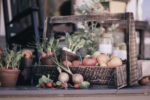
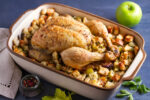
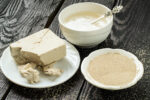
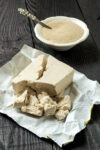
14 thoughts on “Making Fresh Home-Made Yeast for Bread”
Interesting information! I had no idea there were so many ways to make yeast. I love home made bread but gluten no longer loves me so I won’t be trying any of these recipes.
I agree. I love researching old cooking methods but not necessarily to try myself.
Hello! So, when you say fresh yeast I assume you are referring to sourdough, correct? Also, I see a number of old recipes refer to yeast cakes, and they were homemade. It was their version of yeast packets. Do you happen to have a recipe or a better definition for yeast cakes? Did they just take fresh yeast, or sourdough, and dry it in little cakes, crumble it up and rehydrate it? Let me know if I am way off. Thanks so much!
This is a blog post on homemade yeast. I hope this will help answer your questions.
https://vintagerecipesandcookery.com/making-your-own-yeast/
There’s yeast in the air – natural yeast. But I’m not sure where it comes from.
That is why a bread that rises, can be made from a batter that sits out in a warm temperature, overnight.
I have the recipes for sourdough starter, different ones from each grandmother.
It’s so neat to have actual family recipes, keepsakes, etc. I have a pickle recipe hand written by my grandmother.
This is fascinating stuff: finally something I can do! I am interested that you can make all different times of yeast.
What am I missing here – At some point in each one of the three methods, you are instructed to add yeast . . . So if I’m trapper Bruno, and out on the trail in the middle of nowhere trying to make yeast for my bread, where do I get the yeast I’m instructed to add?
The recipes on this blog are from cookbooks written in the 1800s; written for the home cook or housewife. However, if you’re outdoors and carry your own supplies, you can always buy yeast from a store before you leave. It’s sold in small packets or blocks, lightweight, and has a long shelf life.
Wow! That sure was a lot of work! I love the picture of the ad.
Yes, it was a lot of work. The “good old days” weren’t always so good. We’ve got it easy today.
Oh my goodness, I could not imagine having to make my own yeast! I make my own yogurt and bake my own bread, but I guess I cheat! I use the bacteria in yogurt to make more and my yeast is definitely dry and comes in a jar. Easy to work with and not nearly the amount of work as in the old days….thanks for enlightening me.
I don’t think women hardly ever got to leave the kitchen with all the work required to make meals.